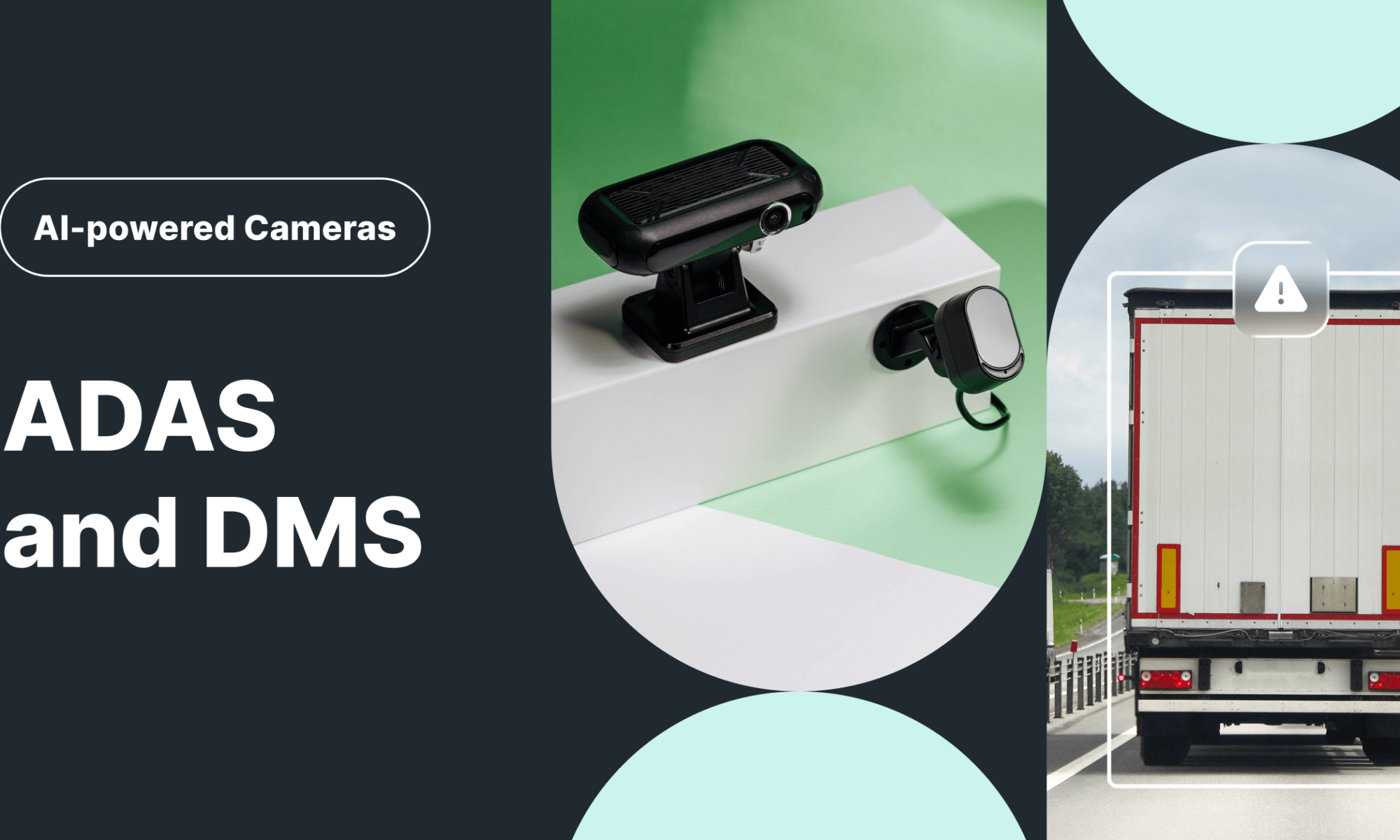ADAS (Advanced Driver Assistance Systems) and DMS (Driver Monitoring Systems) are powerful technologies designed to make driving safer. Both use AI-driven vision to detect risky situations on the road and unsafe driver behaviour, helping prevent accidents before they happen.
In this article, we’ll break down what ADAS and DMS actually do, how they’re different, and why they’re especially valuable for fleet operators, not just private car owners. You’ll also learn how Mapon brings these technologies together in one platform to make fleet safety smarter, easier, and more efficient.
What is ADAS
ADAS stands for advanced driver assistance system. It’s a system built into the vehicle to help the driver in various situations that can happen on the road:
- Vehicle comes too close to the rear of another vehicle;
- Vehicle starts moving out of its lane unintentionally (without using the turn indicator);
- Another vehicle is in a position where the driver can’t see it (blind spot).
ADAS uses technologies like AI, cameras, and sensors to detect these situations and, if possible, fix them. It can inform the driver with a sound or visual alert on the dashboard. In other cases, the system may take control automatically, for example, to brake before a rear collision.
In the European Union, since 2022, different ADAS types need to be factory-installed depending on vehicle type.
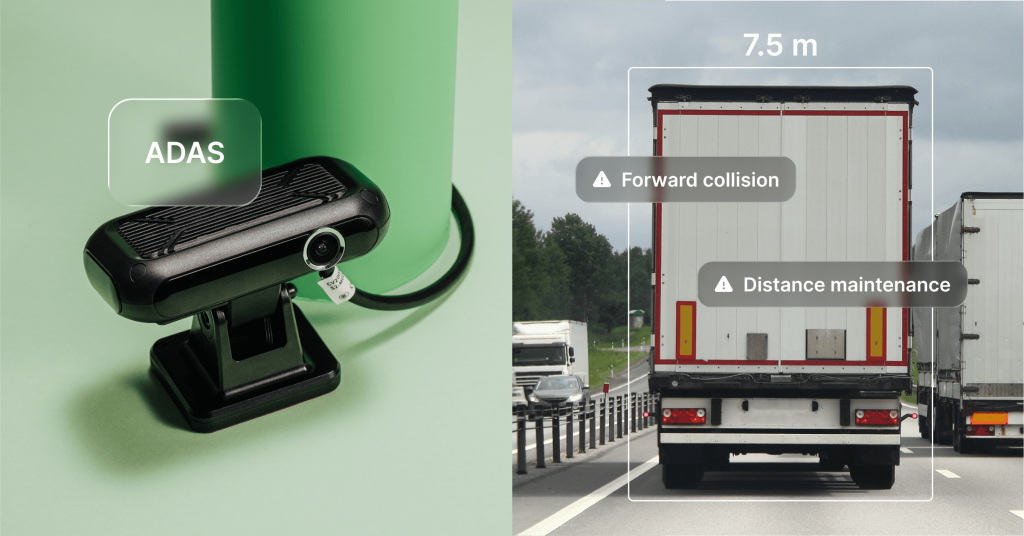
Why is ADAS good
The main reason why ADAS is so widely used is that it consistently reduces the risks of human unpredictability. While the driver may become distracted for a moment, get sleepy, or simply be unable to see a problematic situation, ADAS is constantly on and ready to warn or interfere.
For example, many new cars come with a feature that stops the car if a collision is imminent while driving at speeds under 30 km/h. In city traffic, where movement is irregular, this can be a guardian angel if the car in front breaks suddenly to let a pedestrian pass, and in countless other situations.
To summarise, ADAS checks what’s going outside the vehicle to avoid dangerous situations by warning the driver or taking over certain vehicle functions on its own.
What is DMS
The full title of DMS is driver monitoring system. It focuses on what the driver is doing or not doing. The system uses AI and similar tech as ADAS to check for signs of:
- Getting tired or even falling asleep at the wheel;
- Looking away from the road for too long;
- Usage of distracting items such as phones and cigarettes.
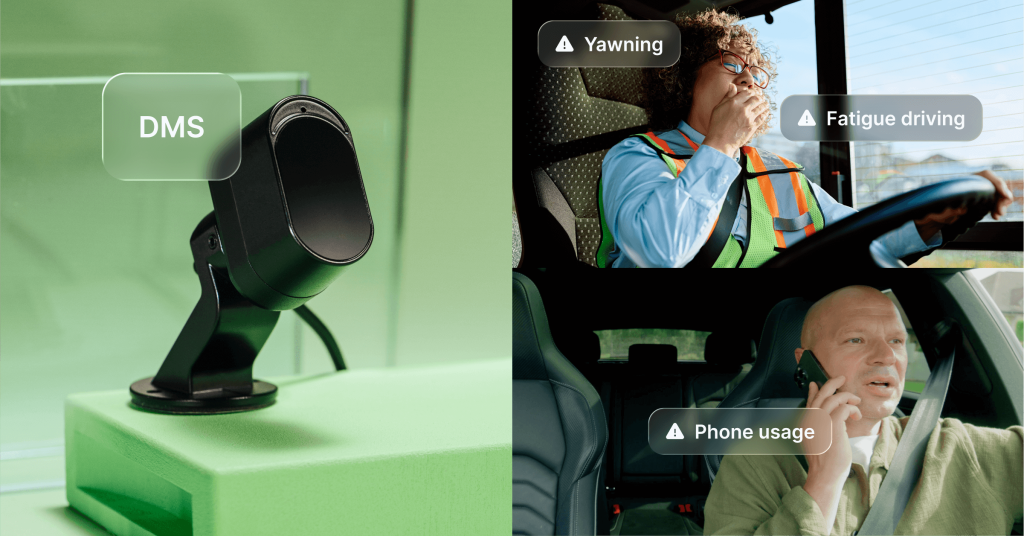
How does DMS help?
The system uses sound and visual alerts to warn the driver about dangerous driving practices. While in some cases, the issue is obvious to the person, at other times, they may be unaware of their condition, especially in cases of drowsiness.
Perhaps you remember the scene in the kids’ movie Cars, where the big truck transporting the famous race car Lightning McQueen falls asleep during a long night drive, leading to a ton of chaos? That’s what DMS is supposed to prevent.
While the underlying technology is quite complex, the basic premise of DMS is simple: make sure the driver is at the top of their game.
Difference between ADAS and DMS
In general, it’s easy to see two main differences between ADAS and DMS:
- ADAS analyses the situation outside the vehicle, while DMS focuses on the driver;
- DMS is purely a warning system, while ADAS can also perform actions on its own, such as braking (depending on the specifics of each system).
Combined, these two systems provide a comprehensive security net with a proven track record of reducing accidents worldwide.
Bringing ADAS and DMS to Your Fleet with Mapon
And now the best news – advanced safety features are also available with Mapon’s fleet camera systems!
Our ADAS (Advanced Driver Assistance System) release focuses on three high-impact alerts:
- pedestrian warnings
- forward collision warnings
- distance-too-close alerts
ADAS features are available with the standard dashcam – no extra hardware needed.

We’re also rolling out DMS (Driver Monitoring System) features that match what the industry’s top systems offer:
- Alerts for drowsiness and distraction
- Yawning
- Phone use
- Smoking
- Seat belt not fastened
All these DMS events are backed by video-covered detection, as well as 5-second recordings before and 5 seconds after each event – so there’s always context if something goes wrong.
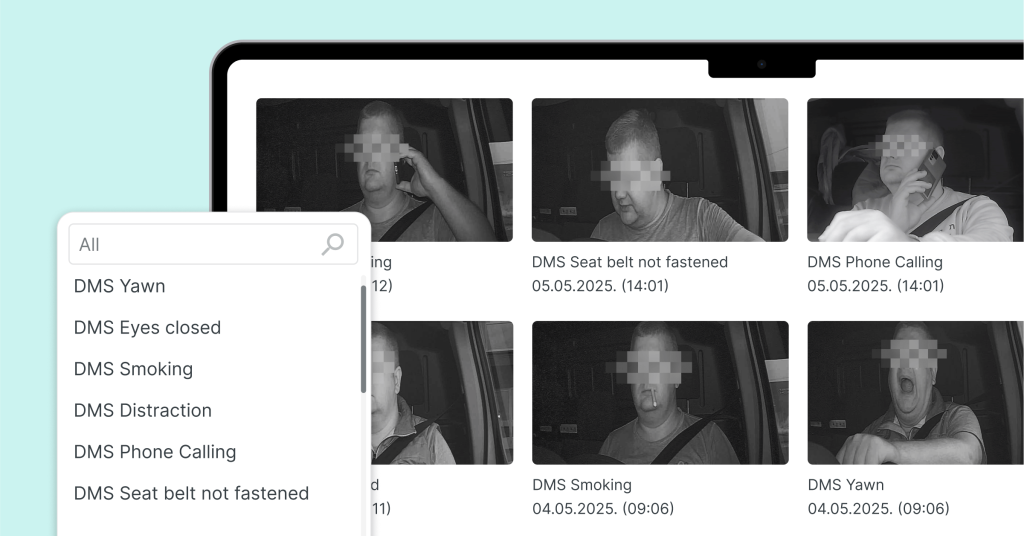
How easy is it to start using DMS and ADAS?
When it comes to hardware, here’s how it breaks down:
- Dashcams offered by Mapon are ADAS-ready. DMS for dashcams works with an additional plug-and-play accessory camera.
- Howen mDVR systems support both ADAS and DMS, but need dedicated accessory cameras. If your fleet uses older Howen units, set aside a bit more time for installation.
To make camera setup simple, our documentation covers everything you need – from camera alignment and installation distances to alert sensitivity and voice prompt settings.
Accessory cameras available for self-installation
You can install ADAS and DMS accessory cameras yourself by following the step-by-step guides. For larger fleets or custom configurations, our professional technicians can take care of the installation for you, including internationally.
Fleet-Wide Safety Starts with ADAS and DMS + Mapon
While separate ADAS and DMS systems typically work on a single vehicle level, combining them with fleet management software like Mapon takes things further. Instead of storing data locally, events are sent to the platform, giving your team full remote visibility.
This shift from local alerts to central oversight turns ADAS and DMS into powerful tools for improving safety across your entire fleet – not just for one driver.
How Mapon extends ADAS and DMS capabilities
Mapon fleet camera systems send footage directly to our fleet management platform. When our AI-powered cameras detect an ADAS or DMS event, they automatically upload relevant videos along with the title of the issue. After a while, the fleet manager will have a catalogue of situations that can be used for:
- Coaching drivers individually and creating safety courses;
- Determining the cause of the accident and proving innocence;
- Getting better insurance premiums by proving the professionalism of drivers.
It’s not just footage for future reference. Fleet managers can also act in real time. For instance, if a driver triggers several lane departure warnings in a short period, the system can flag potential drowsiness. The manager can then contact the driver and recommend a break, preventing a possible accident.
What drivers really think about ADAS and DMS
Rolling out ADAS and DMS across the entire fleet may seem like an obvious step, but drivers don’t always see it that way. The most common pushback comes from discomfort with driver-facing cameras – no one likes the feeling of being watched. If possible, consider using only outward-facing cameras.
If you plan to do driver-facing monitoring, be transparent. Explain that footage is reviewed only when there’s a specific reason. For most drivers, this means nothing changes. If you drive responsibly, you’re not on anyone’s radar.
When introduced the right way, employees will not just accept the solution, but even request to review the footage, as was the case with our client Keskkonnahooldus Eesti OÜ.
What matters most is trust. You need to make it clear to drivers that these systems exist to prevent accidents and ultimately protect drivers’ careers and lives.
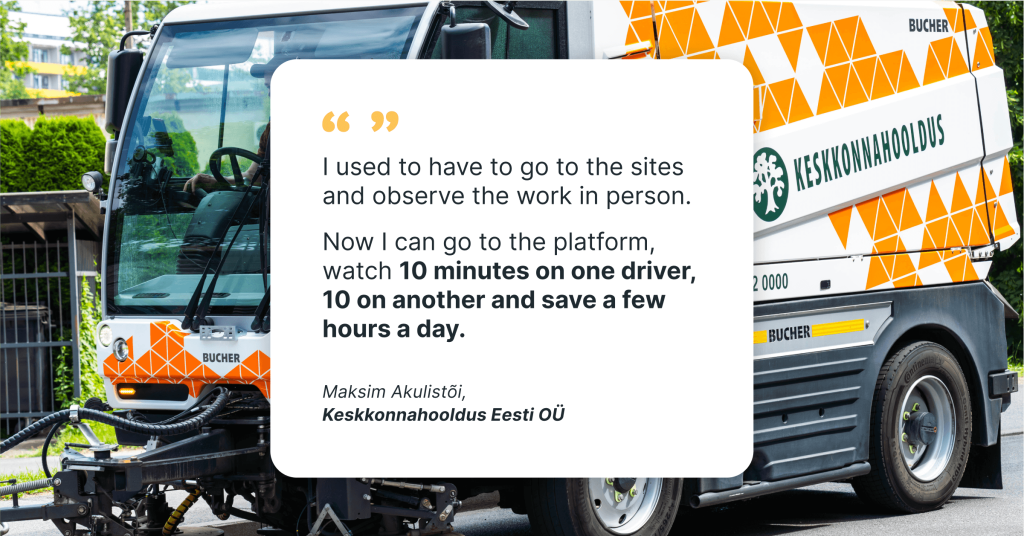
We’re in the new era of fleet safety
ADAS and DMS are becoming ever more sophisticated. Due to the large size and mass of commercial vehicles, these solutions are doubly important for companies providing passenger and cargo transportation. The pressure is on from lawmakers and the general public to reduce heavy vehicle accidents.
The good news for fleet managers is that there are ways to reduce accident risks even further by combining vehicle-based ADAS and DMS tools with cloud-based solutions such as GPS tracking, driver behaviour analysis, and alcohol interlocks.
We’ll keep bringing in the latest tech, so you can easily add safety features without dealing with a bunch of different vendors.Are you using all the available options to improve fleet safety? Discover the wide variety of Mapon fleet management solutions now!

